When it comes to Thai cuisine, one ingredient that often comes up in discussions is monosodium glutamate, which is more commonly known as MSG.
MSG is a common food additive used to enhance flavor, but it has also been controversial due to the perceived negative health effects associated with its consumption. It can also cause intolerances, which is why many people often want to keep track on how much MSG they consume.
So, does Thai food have MSG? The answer is a bit complicated. While not all Thai dishes contain MSG, the use of this flavor enhancer is relatively common in Thai cooking because it’s often added to packet mixtures and spice mixes.
It’s estimated that 70% of sauces and spice mixes used in Thai food have MSG, and since these are a cheap and affordable way to cook a meal, they are very widely used in restaurants.
So how do you avoid this? And what foods should you look out for? In this guide, we’ll be discussing when Thai food will likely have MSG and what foods usually don’t have it.
Why Does Thai Food Have MSG?
But first, why does Thai food have MSG in the first place? MSG is often added to savory dishes to provide a boost of umami, the fifth taste that is commonly described as a savory, meaty flavor.
It can also be used to enhance sweet and sour flavors. In Thai cuisine, MSG is typically added to dishes like soups, curries, stir-fries, and sauces.
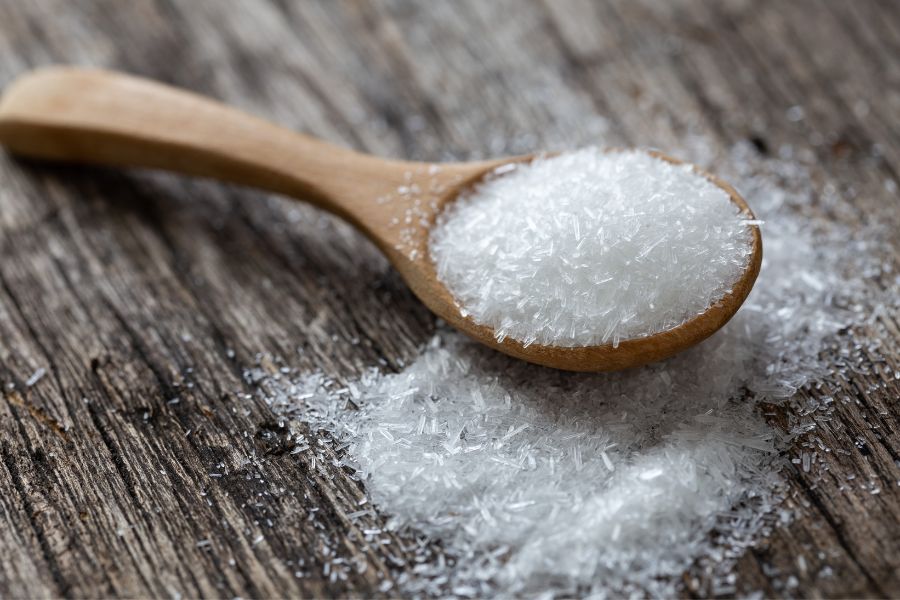
Interestingly, some Thai ingredients themselves naturally contain glutamic acid, which is the amino acid that makes up MSG.
For example, fish sauce, which is a staple ingredient in many Thai dishes, is high in glutamic acid and can provide a similar flavor-enhancing effect as MSG.
Similarly, fermented soybean products like soy sauce and miso also contain glutamic acid.
As such, not all Thai dishes will contain MSG, but may still have the key components in them that make up MSG.
Related Reading: Is Tap Water in Thailand Safe to Drink?
What Dishes in Thailand Have MSG?
While not all Thai food contains MSG, it is commonly used in particular dishes, so to help you figure out what foods will most likely have it, here are some examples of Thai dishes that may contain MSG
Tom Yum Soup
This spicy and sour soup is a popular Thai dish made with shrimp, lemongrass, kaffir lime leaves, galangal, and chili peppers. Many recipes for Tom Yum soup call for the use of MSG to enhance its flavor.
Pad Thai
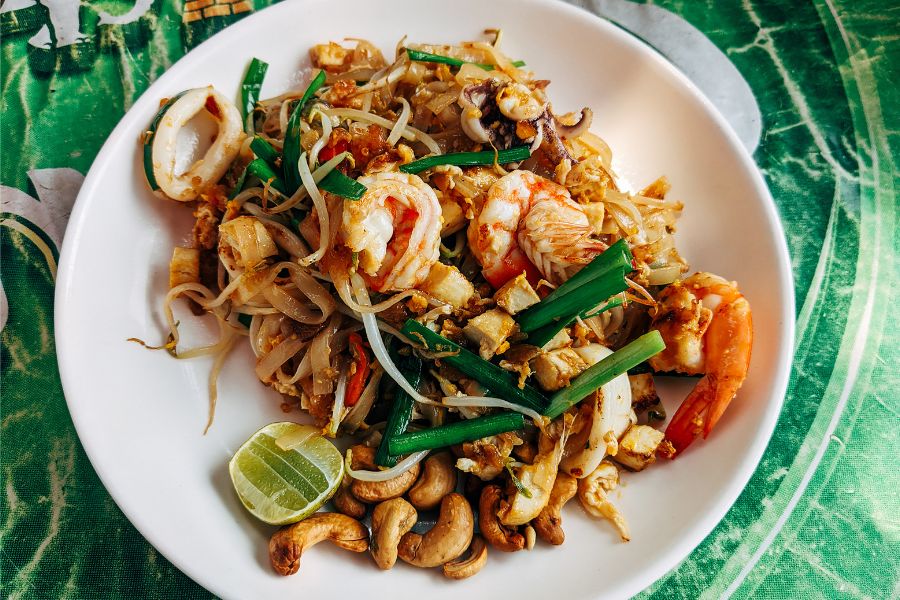
Pad Thai is a famous Thai stir-fried noodle dish made with rice noodles, eggs, shrimp, tofu, bean sprouts, and peanuts. Some restaurants may use MSG as a seasoning for their Pad Thai.
Green, Red and Yellow Curry
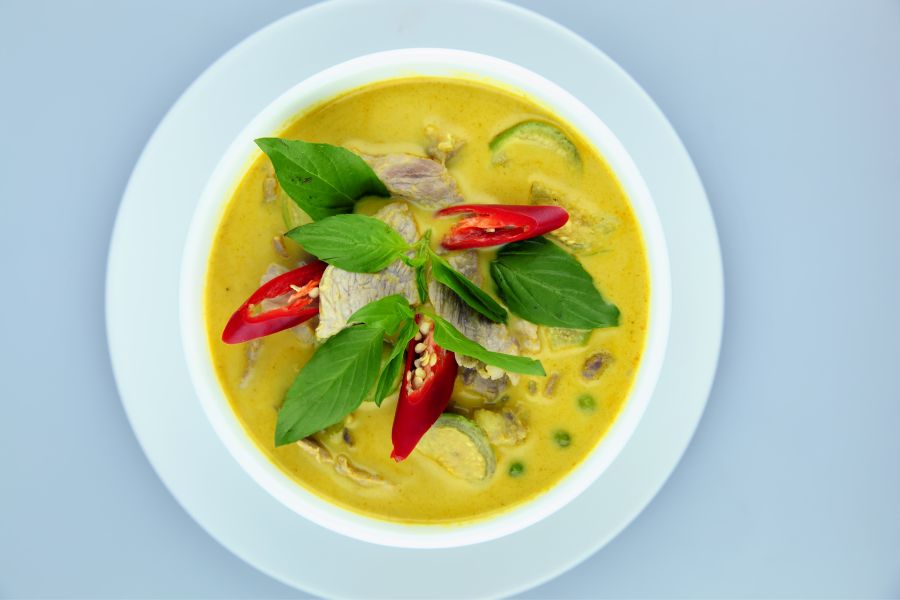
Thai curries tend to always have MSG in local restaurants since they are made with packet mixes or spice mixes.
Green Curry (Kaeng Khiao Wan) is a Thai curry made with coconut milk, green chili peppers, lemongrass, galangal, and other herbs and spices. Some chefs may add MSG to the curry paste to enhance its flavor.
Thai yellow curry, also known as “Gaeng Garee” in Thai, is made with a blend of fresh herbs and spices, including turmeric, cumin, coriander, lemongrass, garlic, and ginger, which give the curry its distinct bright yellow color.
Thai red curry, also known as “Gaeng Dang” in Thai, is a spicy and flavorful curry that is made with a blend of fresh herbs and spices, including lemongrass, galangal, kaffir lime leaves, garlic, and chili peppers, which give the curry its distinctive red color.
Massaman Curry
Massaman Curry is a rich and flavorful Thai curry made with beef or chicken, potatoes, peanuts, and spices like cinnamon, cloves, and cardamom. Some recipes for Massaman Curry may contain MSG.
Stir-fried dishes
Many Thai stir-fried dishes like Pad Kra Pao (stir-fried basil chicken), Pad Prik Khing (stir-fried green beans with chili paste), and Pad Gra Prow (stir-fried pork with Thai basil) may contain MSG as a seasoning.
Fried rice is a big culprit for usually containing MSG.
Related Reading: Does Thai Iced Tea Have Caffeine? What Else Does It Have?
Khao Soi
Khao Soi is a delicious and popular Northern Thai dish that is made with a rich, creamy curry broth and egg noodles. It’s traditionally made with chicken, but can also be served with beef or tofu for vegetarians.
The dish is a mixture of coconut milk, red curry paste, and a variety of aromatic herbs and spices such as turmeric, cumin, coriander, and ginger.
Fast Food Restaurants & Convenience Store Snacks
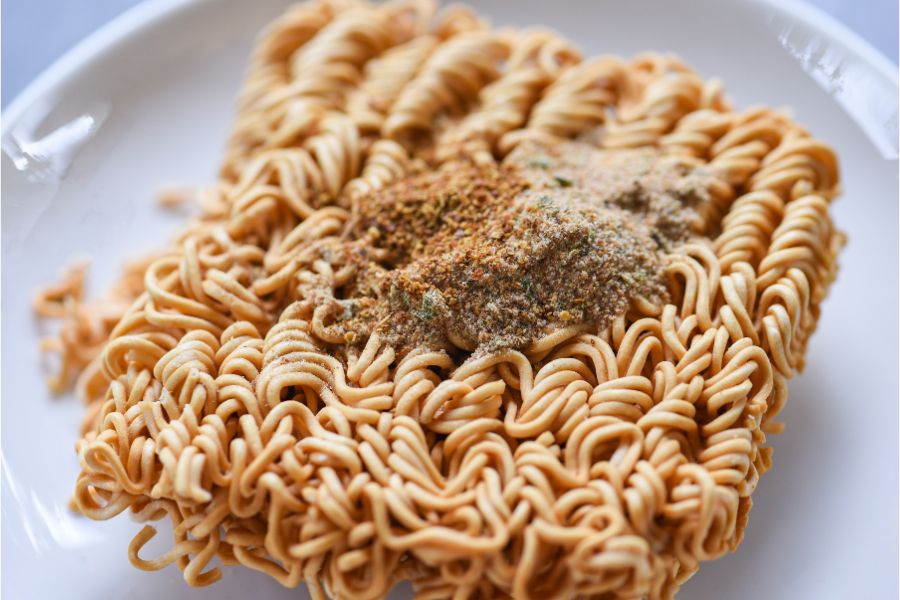
Many fast food restaurants claim not to use MSG in their products such as burgers and fries, but beware the sauce! The packet sauces often have MSG in them, so be sure to check the ingredients on the packet.
Other foods such as instant noodles and packet mixed curries will usually have MSG, so if you’re looking for a quick late night snack from the 7-Eleven, be mindful about getting the cup noodles.
Thai Dishes That Don’t Contain MSG
While many Thai dishes may contain MSG, there are also plenty of delicious options that do not. Here are some Thai dishes that are typically made without MSG.
Papaya Salad (Som Tum)
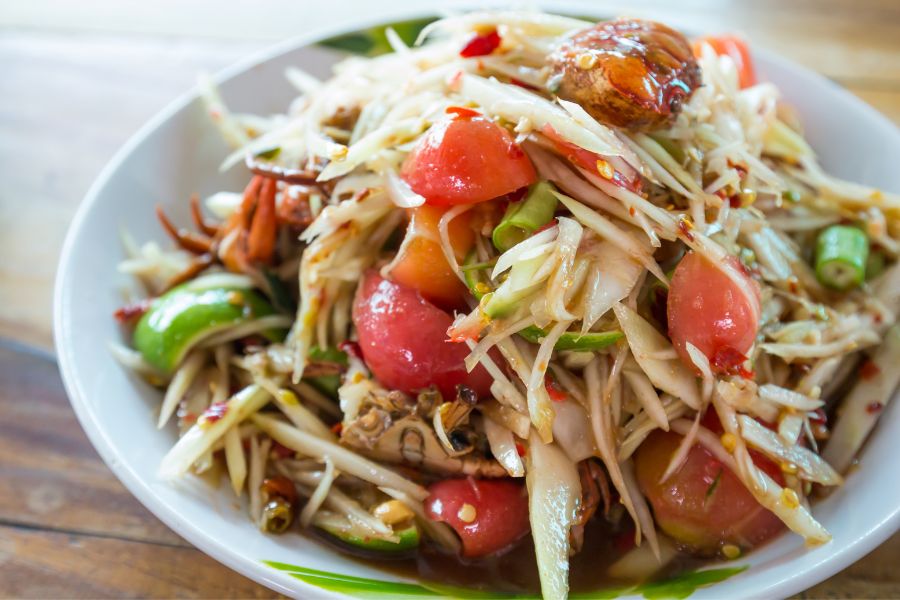
This refreshing salad is made with shredded green papaya, tomatoes, peanuts, and fish sauce. It’s a popular dish in Thailand and can be found at many Thai restaurants.
Grilled Meat Skewers (Moo Ping, Gai Yang)
These grilled meat skewers are marinated in flavorful spices like lemongrass, garlic, and turmeric, and are often served with a sweet chili dipping sauce.
Stir-fried Vegetables (Pad Pak)
This dish features stir-fried vegetables like broccoli, carrots, and bok choy, which are cooked in a light sauce made with oyster sauce or soy sauce.
Tom Kha Gai Soup
This creamy and savory soup is made with chicken, coconut milk, lemongrass, galangal, and lime juice. It’s a popular dish in Thailand that is often served as an appetizer.
Related Reading: Do Thai People Use Chopsticks?
How To Avoid MSG in Thai Food?
It’s important to note that not all Thai restaurants use MSG in their cooking. Some chefs prefer to avoid it altogether, while others may use it sparingly or only in certain dishes.
If you’re concerned about consuming MSG, here are some practical ways you can avoid it.
1. Ask your server not to use MSG
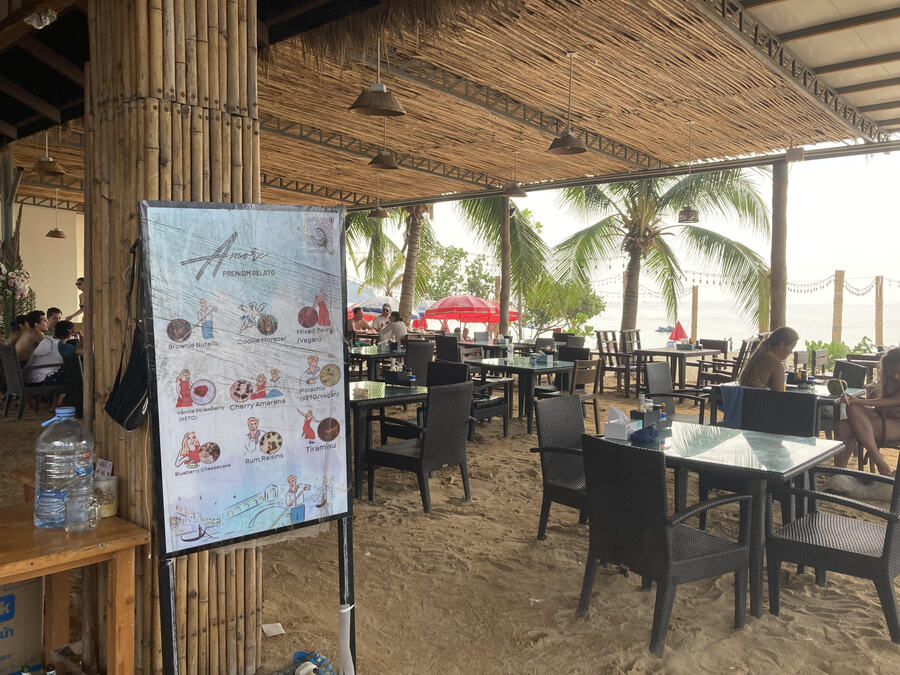
It’s always a good idea to ask your server or chef if the dishes you’re ordering contain it.
Most likely, if you are ordering street food or if you are visiting a very local restaurant, they may not know that they are using it as it comes in the spice/packet mix.
However, you can also ask: “No Pong Chu Rod” which is Thai for “No MSG”, which will tell the server you don’t want any extra MSG added to your meal.
Whether you get no MSG though is another matter. Like I said, it’s commonly used in the packet mixes and so the cook might not know they are using it, so be mindful that you may be unknowingly eating MSG a lot of the time in Thailand.
If you are dining at a more upmarket restaurant or at the restaurant in a 4* or 5* hotel, then you are more likely to avoid it.
These types of restaurants prefer not to use MSG, or if they do, they can easily remove it for you if you ask for no MSG.
2. Look for restaurants that advertise “No MSG”
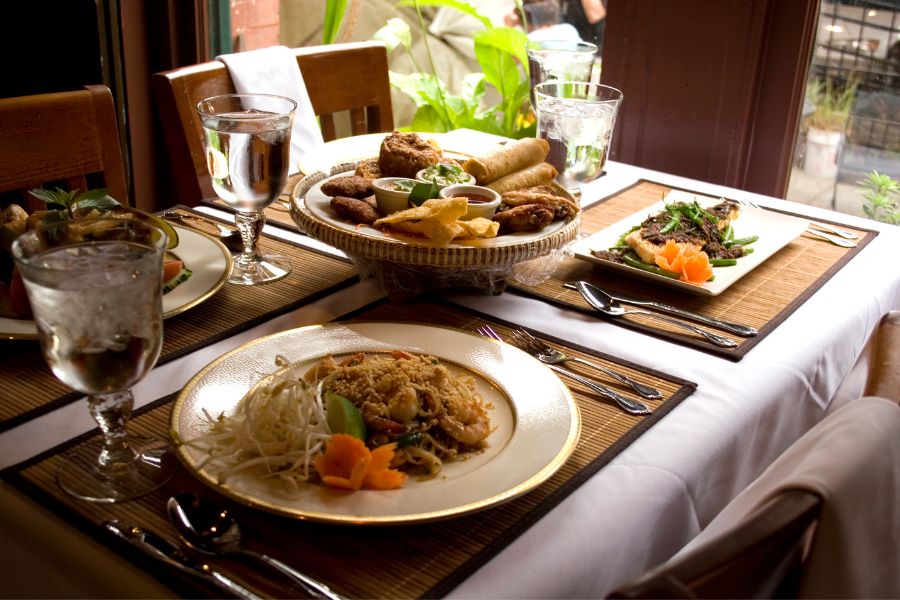
You can also look for restaurants that advertise themselves as MSG-free or that use natural flavor enhancers instead.
A lot of vegan or healthy restaurants in Thailand will have a “no MSG” policy. You might need to do a bit of searching around until you find a place, or you can ask your hotel whether they could recommend a place.
3. Cook for yourself
If you really want to avoid MSG in Thailand, you can try cooking Thai food at home using fresh, natural ingredients and avoiding processed or packaged seasonings.
Not sure how to cook Thai food? No problem! Take a cooking class. There are cooking classes in pretty much every major city in Thailand and it’s one of the Thai bucket list experiences you must do when visiting the country.
FAQs About MSG in Thai Food
Here’s what people usually ask us about MSG in Thai food…
What is MSG called in Thailand?
MSG in Thailand is called pong chu rod, so when asking for no MSG in your food, you can ask “No Pong Churod Khob Khun (Ka if you’re a girl, Khrap if you’re a boy)” which means “no MSG thank you.”
How can I tell if something has MSG?
By law, packet mixes need to state on the packet that they contain MSG, which would be marked as either “MSG” or “621” which is the additive code number.
How to tell if a dish has MSG?
MSG looks like salt and tastes of nothing on its own, so it’s not possible to tell whether a dish has MSG just by looking at it, and sometimes even by tasting it. However, if you have an intolerance, you can purchase MSG tester strips (L-Glutamate Test Strips) which tests the pH level in your food. It does mean you waste your food if it turns out to have MSG, but in Thailand, it’s your only sure way of checking your food if you don’t trust your server.
Final Thoughts
MSG is a common ingredient in Thai cuisine, but it’s not present in all dishes. If you’re concerned about consuming MSG, it’s always a good idea to ask your server or chef and look for restaurants that use natural flavor enhancers.
And if you’re cooking Thai food at home, you can experiment with using natural sources of umami like fish sauce and fermented soybean products instead of using MSG.
